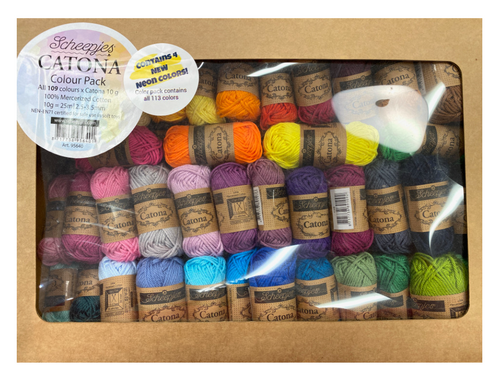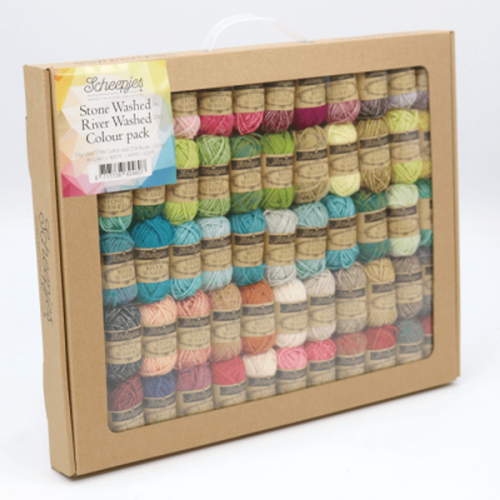Scheepjes

Since 2010, after a twenty-two-year hiatus, we can use Scheepjeswol yarns again. The rise, success, demise and revival of a genuine Dutch brand.
Wool from Veenendaal
The history of the Scheepjeswol brand is closely linked to the place where it all started and ended: in Veenendaal in the province of Utrecht. From the second half of the 15th century until the end of the 17th century, peat digging and cutting and bee keeping were the most important resources of income in this town and its close proximity. When around 1750 the peat valleys were exhausted and digging was no longer profitable, the processing of wool became the most important industry. The wool industry, mostly wool combing and spinning, was basically a cottage industry. After spinning, the wool was plied into worsted (yarn from short wool fibres) or yarn. Next the wool was dyed. At the end of the 18th century, trade developed and small businesses emerged: some wool combers bought the spun wool, dyed it and sold it on.
Increasingly bigger and bigger
In 1799, Dirk Steven van Schuppen was also working as a wool comber in Veenendaal, employing thirteen helpers. The farmers brought the untreated wool to Dirk Steven, who bought it and had it processed by combers and cleaners. The combed wool was spun by women from the surrounding areas, after which the wool was dyed and woven in the company itself. In the following years, Van Schuppen’s Wool Business grew steadily until in 1885, almost 100 years after it had been founded, it employed nearly 300 people. Meanwhile in 1855, the name of the company had changed to ‘Widow D.S. Van Schuppen and Son’ when Dirk Steven’s second wife and widow and their seventeen-year-old son took over management. During the second half of the 19th century, the transition from cottage industry to a proper sector of industry happened gradually and was successful. More and more machines were used and in the 1930s, despite the global economic crisis, they invested heavily in new production buildings, warehouses and an office building. In those years they also introduced the name Scheepjeswol. The company grew steadily after Wold War II and in 1949, at its 150th anniversary, it received a royal warrant. At its height in 1962, Scheepjeswol had 900 employees: the company had expanded and had been modernised in the 15 years following WW II.
A new start
This all changed in the second half of the 60s. Wages in The Netherlands increased rapidly, at Scheepjeswol certainly 10% per year for a few years in a row. This increase in costs was not allowed to be passed on to the customer. Moreover, the five-day working week was introduced, which caused a decrease in production. The 70s brought on even more serious problems: cheaper products from countries outside of Europe and a shrinking market eventually led to Scheepjeswol’s bankruptcy in 1988. In 1989, the buildings on the factory site in Veenendaal were torn down. In its place housing and the Scheepjeshof shopping centre arose. It was the end of almost 190 years of wool production, at least for now. Twenty-two years later, family-owned business De Bondt, a haberdashery wholesaler located in Tynaarlo, Drenthe, took over the Scheepjeswol brand name and gave it a new lease of life so that today we can again use the yarn of this famous Dutch brand.
The Scheepjeswol logo shows a ship based on a ‘Samoereus’, an inland vessel that among other things was used to transport peat from the bogs around Veenendaal. You can find the same ship in Veenendaal’s coat of arms.















